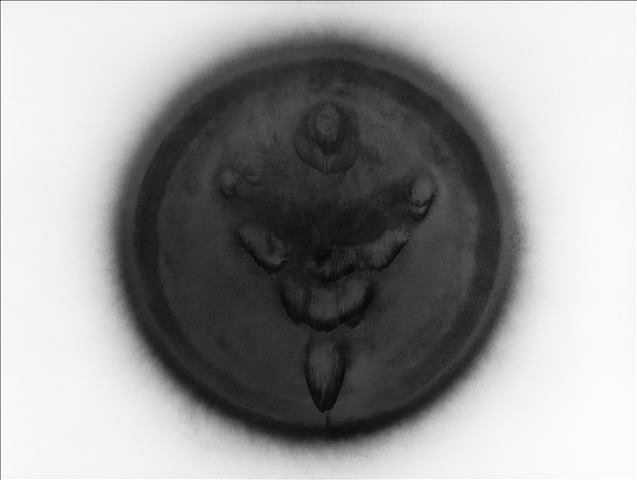
Otto Piene, “Venus of Willendorf (Venus von Willendorf),” oil and soot on canvas, 1963 (© Otto Piene; photo courtesy Stedelijk Museum Amsterdam)
Solomon R. Guggenheim Museum
1071 Fifth Ave. at 89th St.
Friday – Wednesday through January 7, $18-$22 (pay-what-you-wish Saturday 5:45-7:45)
212-423-3587
www.guggenheim.org
The Guggenheim completes its third revelatory group show in a row with “ZERO: Countdown to Tomorrow, 1950s–60s,” coming hot on the heels of “Gutai: Splendid Playground” and “Italian Futurism, 1909–1944: Reconstructing the Universe.” Founded in 1957 by German artists Otto Piene and Heinz Mack, Zero brought together European artists who sought a fresh, optimistic start following the devastation of WWII. “From the beginning we looked upon the term [ZERO] not as an expression of nihilism — or as a dada-like gag, but as a word indicating a zone of silence and of pure possibilities for a new beginning as at the countdown when rockets take off — zero is the incommensurable zone in which the old state turns into the new.” Joined by Günther Uecker in 1961, the collective created monochromatic paintings, kinetic sculptures, and action works that explored light, nature, and space, often removing the hand of the artist. Subtle, complex brushstrokes of multiple colors were not on the agenda; instead, Lucio Fontana slashed his canvases, Uecker hammered in nails, and Piene, Yves Klein, Bernard Auberlin, Piero Manzoni, and Henk Peeters used fire and soot. Numerous pieces, including Gianni Colombo’s “Pulsating Structure,” Klein’s “Space Excavator,” Daniel Spoerri’s “Auto-Theater,” Piene’s “Light Ballet,” and Jean Tinguely’s “Butterfly (Two Points of Stability),” contain mechanically powered elements that move, and in the Guggenheim show they are active only at timed intervals, adding an expectant quality to the viewer’s experience, which echoes the group’s hopefulness for the future. Meanwhile, Mack’s “Silver Dynamo,” Almir Mavignier’s “Convex-Concave II,” and Jesús Rafael Soto’s vibration works play with viewers’ perception in engaging ways.
During the early 1960s, Group Zero’s influence spread to Japan, the Americas, and other parts of Europe; the exhibition features more than 180 works by some forty artists from Belgium (Walter Leblanc, Paul Van Hoeydonck), Romania (Spoerri), Brazil (Almir Mavignie), the Netherlands (herman de vries, Jan Schoonhoven), Japan (Yayoi Kusama), America (Robert Breer, George Rickey), Switzerland (Dieter Roth), and other nations. Curator Valerie Hillings bookends “ZERO: Countdown to Tomorrow, 1950s–60s” with two wonderful rooms, beginning in the High Gallery with an examination of the seminal 1959 Antwerp exhibition “Vision in Motion — Motion in Vision,” which serves as a kind of primer for what visitors can expect as they make their way up the Guggenheim’s Rotunda to the very last room, which contains a re-creation of the 1964 Documenta 3 installation “Light Room: Homage to Fontana,” as light-based kinetic works by Mack, Piene, Ueker, and Fontana turn on and off seemingly randomly, casting shadows on the walls and lighting up the darkness. The exhibition closes on January 7 with the panel discussion “ZEROgraphy: Mapping the ZERO Network, 1957–67” ($12, 6:30), with Antoon Melissen, Johan Pas, and Francesca Pola, moderated by Hillings and followed by a reception and a final viewing.